4.4.1* General.
Objects projecting from walls (for example, telephones) with their leading edges between 27 in and 80 in (685 mm and 2030 mm) above the finished floor shall protrude no more than 4 in (100 mm) into walks, halls, corridors, passageways, or aisles (see Fig. 8(a)). Objects mounted with their leading edges at or below 27 in (685 mm) above the finished floor may protrude any amount (see Fig. 8(a) and (b)). Free-standing objects mounted on posts or pylons may overhang 12 in (305 mm) maximum from 27 in to 80 in (685 mm to 2030 mm) above the ground or finished floor (see Fig. 8(c) and (d)). Protruding objects shall not reduce the clear width of an accessible route or maneuvering space (see Fig. 8(e)).
Fig. 8 Protruding Objects
Fig. 8 Protruding Objects
Fig. 8 Protruding Objects
Fig. 8 Protruding Objects
Fig. 8 Protruding Objects
Fig. 8 Protruding Objects

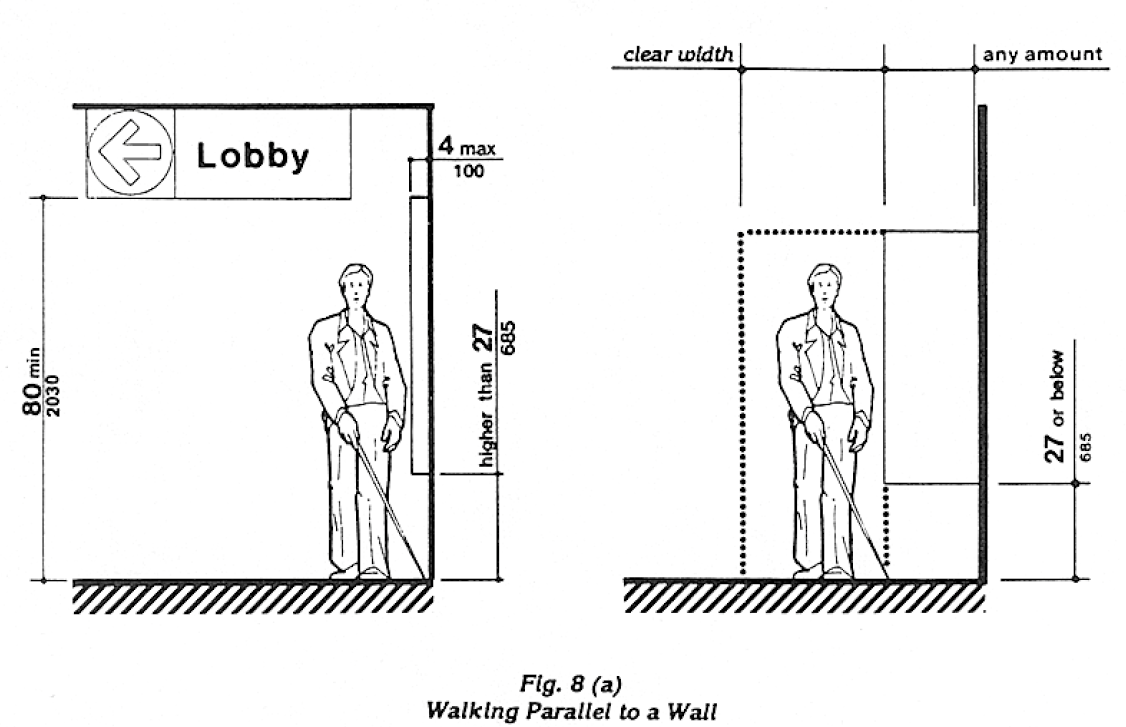
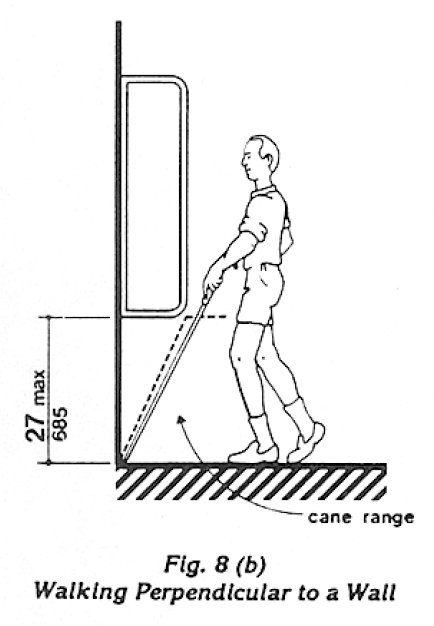
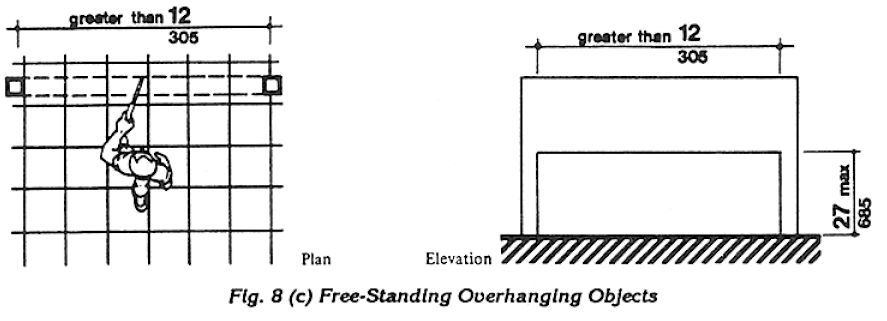
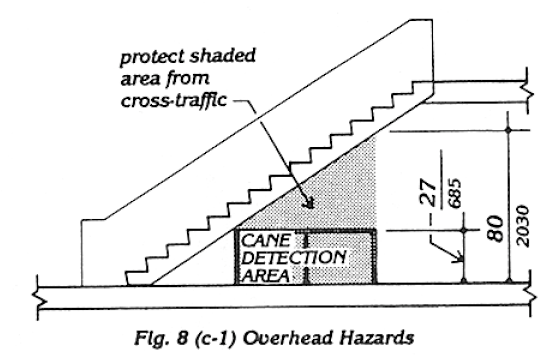
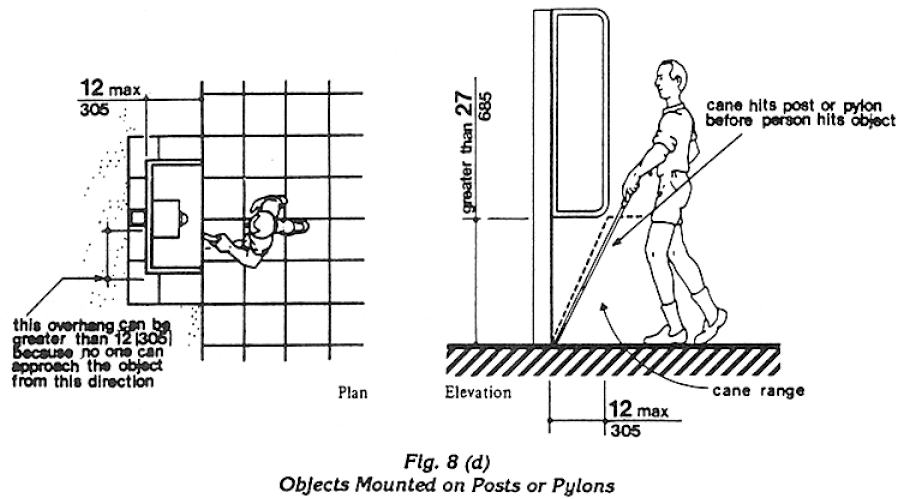
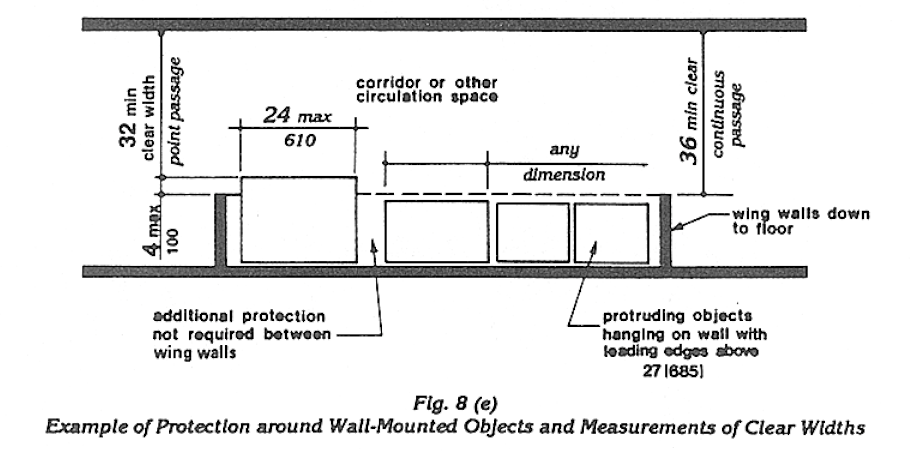
User Comments/Questions
Add Comment/Question